
Sightseeing
Waterton Lakes National Park
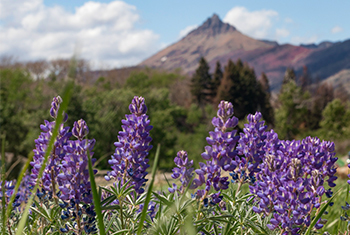
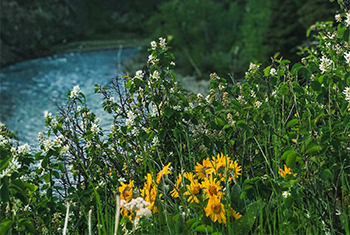
Waterton Lakes National Park, where the prairies of Alberta meet the peaks of the Rocky Mountains. Endless adventure awaits - clear lakes, thundering waterfalls, rainbow-coloured streams, majestic peaks and magical stargazing. Waterton Lakes is also home to an exceptionally diverse range of wildlife, plants and wildflowers. Best of all is Waterton’s cozy, small town atmosphere that will have you planning your next visit as soon as you depart.
Wildflowers
The meeting of prairie and mountain ecosystems underlies Waterton Lakes' uncommonly rich variety of plants. Over 1000 plant species are found in Waterton Lakes National Park, and many are rare. The best time to see wildflowers is when they paint the prairies in late spring. Step out of your car at any scenic roadside pullout and you’ll likely spot many wildflowers. Fireweed, showy aster, balsamroot, silky lupine, prairie crocus, alpine paintbrush, beargrass and shooting stars are favourites frequently seen.
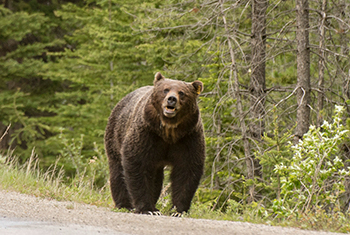
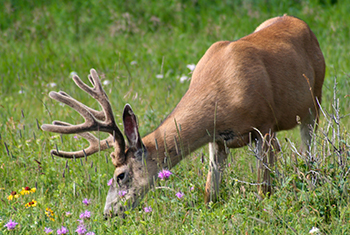
Wildlife
The park's variety of plant communities provide homes for many animals, including over 60 species of mammals, over 250 species of birds, 24 fish and 10 reptiles and amphibians. Grasslands sweep up wide valleys and lower mountain sides, allowing for excellent wildlife viewing.
The chance of seeing wildlife is one of the most exciting things about the mountain national parks. It is important to treat wild animals with the respect they deserve. Approaching them too closely threatens their survival. Check out the Wildlife Viewing page for information on safe viewing practices. Wild animals tend to be more active early or late in the day; head out at those times for ideal viewing.
Landscape
The landscape and variety of life you see in Waterton Lakes was shaped by natural processes like fire, flood and avalanche. Evidence of these processes is easily experienced as you drive or walk in the park. A spring trip along a road crossing to the Blakiston Fan will allow you to experience firsthand the influences of water and floods in the creation of this important wildlife habitat (please stay on roads and trails when crossing the Blakiston Fan).
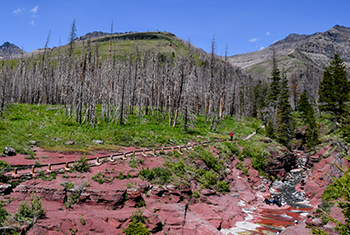
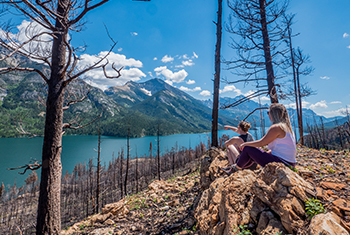
Erosion caused by moving water has also created two iconic features - Cameron Falls in the Waterton townsite, and Red Rock Canyon, with its bright sedimentary rock.
The effects of fire can be easily seen during a visit to the park. On September 11, 2017, the Kenow Wildfire established itself in Waterton Lakes National Park. The fire had a significant impact on infrastructure, and burnt 19,303 hectares, about 38% of the park.
Experience this renewed landscape firsthand by taking a drive along the Entrance Road, Akamina Parkway or Red Rock Parkway. Effects from the fire can be seen around every corner, from burnt trees still standing tall to the fireweed emerging in previously burned areas in spring.
Parks Canada staff worked hard to protect critical infrastructure like the Waterton Townsite and the Prince of Wales Hotel National Historic Site, saving them from the fire.
Exhibits and National Historic Sites
While driving the scenic parkways, take time to go for a short walk on one of the prairie trails, or stop by an interpretive exhibit.
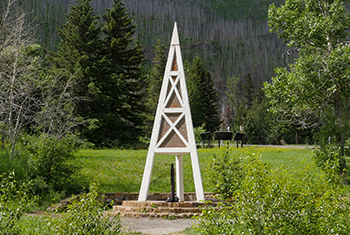
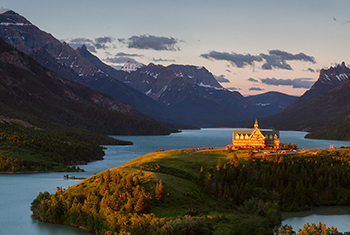
Along Red Rock Parkway you’ll find several pullouts with interpretive exhibits highlighting the area’s natural history, as well as Indigenous history. These pullouts offer gorgeous views in addition to information on the park’s long-standing human presence.
Along the Akamina Parkway, a short stop at the First Oil Well in Western Canada National Historic Site introduces you to some early park history.
Waterton Lakes' most recognizable human landmark is the Prince of Wales Hotel National Historic Site. Visit the Prince of Wales plaza and take in the classic view of Upper Waterton Lake.
These two national historic sites are part of a much larger system of sites found across Canada. You can visit many more of these sites while you are in southern Alberta, including Bar U Ranch, Stirling Agricultural Village and Head-Smashed-In Buffalo Jump, a UNESCO World Heritage Site.
Stargazing
After all that adventure, don’t hop into bed just yet - take in the night life! Waterton Lakes National Park and Glacier National Park in the United States are jointly recognized by the International Dark-Sky Association (IDA) as an International Dark Sky Park. The night sky views are magical here. Look up and you can see The Milky Way, constellations and even other planets. Read more about stargazing at Waterton Lakes.
The mountains are calling. Plan your visit to Waterton Lakes National Park today. Follow us on Facebook and Twitter for park updates, events and activities happening, educational content and spectacular photos of Waterton Lakes National Park.
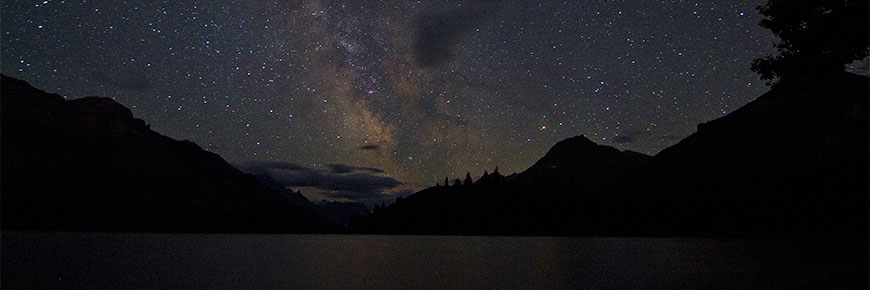
- Date modified :